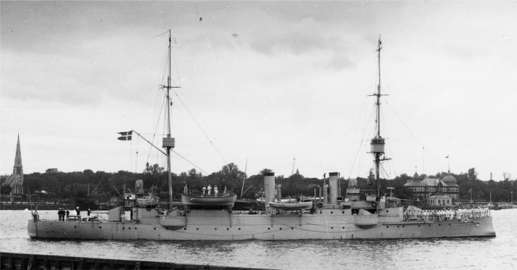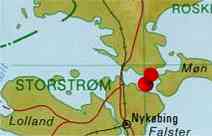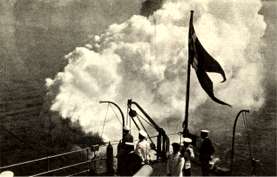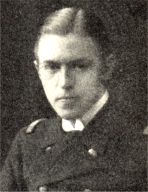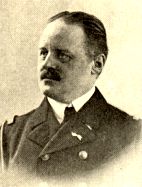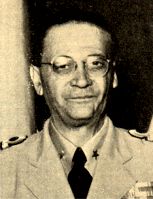|
You are here: 4Campaigns & Battles4Index4Disaster on the Cruiser GEJSER |
|||||||||||||||||||||||||||||||||||||||||||||||||||||||||||
|
Disaster on the cruiser GEJSER (1923):
Heavy toxic blast
|
||||||||||||||||||||||||||||||||||||||||||||||||||||||||||
|
The Training Squadron had planned an exercise for the day, including the tactical use of smokescreen. The participating torpedo boats were to train the use of a smokescreen to screen others ships exposed to observed enemy gunfire. For that purpose, the torpedo boats were equipped with a new Swedish smoke-screen apparatus. Each smoke generator contained 10 kilos of phosphorus. The plan was; that the officers and |
The
disaster took place |
men of the Training Squadron were to be trained on board the GEJSER in the use of these new smokescreen generators.
It was initially planned that all the 1st officers of the torpedo boats should attend the demonstration. This was rearranged so the demonstration should be attended by the CO's.
This change most probably spared the Danish Crown Prince Frederik, the later King Frederik the 9th, from being involved in the disaster. The Crown Prince was 1st officer of one of the participating torpedo boats, DELFINEN.
Heavy blast instead of a Smokescreen
One of the officers observing the demonstration, Lieutenant Kai Hammerich, CO of the Torpedo Boat SÆLEN, describes the disaster like this:
|
Putting down a smokescreen |
"We were now, all Officers and non-commissioned officers assembled on the quarterdeck. Chief Engineer E. Borg was in charge of the demonstration, and he was to demonstrate the use of the smoke-screen generator to us. Found myself sitting on the rail just 2 meters from the generator. Borg made ready to ignite the phosphorus. |
The main purpose was that a thick and opaque smokescreen should be emitted and dispersed by the wind.
Last year I had attended a similar demonstration with some older and much larger smokescreen generator on board the PEDER SKRAM.
I remembered just suddenly that on this occasion, I was hit by just a small drop of burning phosphorus, and it took quite some time to heal this minor wound.
Bearing that on my mind, I realized that I might have to be a little more careful. I jumped from the rail and turned my head away from the demon-stration for just a few seconds.
At the same time you heard a deafening blast; and I felt, I was kicked from behind and blown to the deck.
Immediately thereafter, there was a brief moment of absolute silence.
This moment of absolute silence was followed by groaning and shouting, but I sensed nothing. Someone ordered fire bill to be established. I could not see anything, but while inhaling I could feel the toxic phosphorus smoke. I tried to rise to get some fresh air, but was immediately blown back to the deck.
I suddenly realized what had happened! The 10 kilos of phosphorus must have exploded instead of developing a smokescreen.
At the same time realizing that just inhaling the toxic air could have killed me.
What happened thereafter stands pretty unclear to me.
But what a nightmare, I woke up a little later and everything hurts and the smell of burned human flesh was penetrating. I heard feet on the deck, and heard Captain Wenck order: "Extinguish the fire on Lieutenant Hammerich".
|
Lieutenant Commander Rützou died from his injuries Lieutenant Commander Paul C. Rützou, comman-ding officer of the Torpedo Boat DELFINEN, was one of the Danish officers severely injured in the blast. Two weeks after the blast, he died from his inju-ries, at the Military Hospital in Vordingborg on June 11, 1923. Paul C. Rützou died and left his American born wife a widow; he was later buried at the Military Ceme-tery (Garnisons kirkegaarden) in Copenhagen.
Most of the Training Squadrons CO's |
Lieutenant Commander
Paul C. Rützou |
The Commanding Officer of GEJSER, Commander Godfred Hansen, was also one of the officers severely injured.
He had to resign from his command, as he, together with the other casualties, were transferred to the nearby Military Hospital in Vordingborg.
CO of the
GEJSER,
Commander
Godfred |
Most of the commanding officers of the Training Squadrons 9 Torpedo Boats and 3 Mine ships were among the injured. Immediate First Aid was given on board the cruiser. The injured were transported to the Military Hospital in Vordingborg. The transport was provided by some of the Torpedo Boats. Marked for life Just 2, who only suffered minor wounds, were able to return to their duties that same day. 21 of those sustaining minor injuries were transferred to the Naval Hospital in Copenhagen on the next day, May 26. 32 of the officers and men, suffered severe injuries |
had to remain at the Military Hospital in Vordingborg for intensive care.
As soon as their health situation improved, they were one by one transferred to the Naval Hospital in Copenhagen.
By the end of the year most were discharged from the hospital.
Many of the casualties were, however, marked for life.
Chief Engineer E. Borg, who had been conducting the demonstration, was blinded for life.
|
Many of the officers and men involved in the disaster terribly painful and disfiguring wounds to the face, on the neck, the body and the arms. It took years and many painful operations before the wounds had healed. Several of the involved were marked for life by disfigurations and big scars. Injuries that even the most skilled Danish and British surgeons could only partially heal by plastic surgery. Lieutenant Kai Hammerich, one of the officers severely injured as mentioned above, had lost his left ear at the blast and suffered severe burns to his head and neck. He received almost 3 more years of intensive care, including 14 plastic surgeries in both Denmark and England. |
Lieutenant |
Lieutenant Kai Hammerich later became Captain, and was the commander of the Danish Expeditionary Force to Korea in 1950-1953 with the hospital ship JUTLANDIA.
The Training Squadron
The Light Cruiser GEJSER, built back in 1892, had since the beginning of 1923 been the command ship of a Training Squadron performing naval exercises in Danish waters.
The strength of the Training Squadron included 9 torpedo boats, 3 mine ships and 7 submarines, together with a number of seaplanes and the auxiliary vessels GRØNSUND and FENRIS.
Commanding the Training Squadron was Captain H. L. E. Wenck.
Shortly after the disaster and following the necessary reorganizations, the Training Squadron resumed its exercises.
Epilogue: A Narrowly Averted Disaster
Later this summer the Cruiser GEJSER was involved in a further accident, which could easily have resulted in an even greater disaster.
During a submarine attack exercise the GEJSER collided with the sub-merged Danish Submarine BELLONA.
Fortunately, the collision only caused a bent periscope on the sub, and the submarine reported no further damage.
Just two days later, the Submarine BELLONA once narrowly evaded again close to disaster. This time one of the torpedo boats collided with the submerged submarine. And once again the only reported damage was, once again, a bent periscope.
|
Sources: |
||
|
& |
Af mit livs drama, by Kai Hammerich, J. Frimodts forlag, Copenhagen, 1961 |
|
|
& |
Danske Søofficerer 1933-1982, edited by S. E. Pontoppidan og J. Teisen, Published by Søe-Lieutenant-Selskabet, Copenhagen, 1984. |
|
|
& |
Det Danske Søofficerskorps 1801-1919, by Th. A. Topsøe-Jensen, Gyldendals Boghandel and Nordisk Forlag, Copenhagen, 1919. |
|
|
& |
Officerer i den Dansk-Norske Søetat 1660-1814 og den Danske Søetat 1814-1932, Bind I og II, by Th. A. Topsøe-Jensen and Emil Marquard, H. Hagerups Forlag, Copenhagen, 1935 |
|
|
& |
Vore ubåde gennem 75 år - Det danske ubådsvåben 1909-84, by Hans Chr. Bjerg, Hans Chr. Dahlerup Koch and P. B. Nielsen, Forlaget Forum, 1984 |
|
|
& |
Vore krydsere, by R. Steen Steensen, Commander s.g., Marinehistorisk Selskab, Strubes forlag, 1971 |
|
|
& |
Vore orlogsskibe fra halvfemserne til nu, by Kay Larsen, Nyt Nordisk Forlag/Arnold Busck, 1932 |
|
|
44You are also referred to the Naval Bibliography |
||
![]()
- Do you miss a major event on this Site,
or do you hold a great story?
Are you able to contribute to the unfolding of
the Danish Naval History,
please
e-mail
me, enclosures are welcome.
Please remember to list your sources.
You can also use the Naval Web Forum on this web-site.
![]()
|
MORE IN-DEPTH STORIES FROM |
|
Disaster on the GEJSER (1923) |
|
THE TOPIC STORIES: |
|
- Wars against England (1801-1814) - Reconstructing the Navy (1814-1848) - The 1st Schleswig War (1848-50) - The interim War Years (1850-64) - The 2nd Schleswig War (1864) - The long Period of Peace (1864-1914) - The Navy during the 1st World War (1914-1918) - The Interim Years (1919-1939) - The Navy during the 2nd World War (1939-1945) - The Cold War Period (1945-1989) - |
-
This page was last updated: -
This page was first published: March 31, 2002
Copyright © 2013-2016 Johnny E. Balsved - All rights reserved - Privacy Policy

